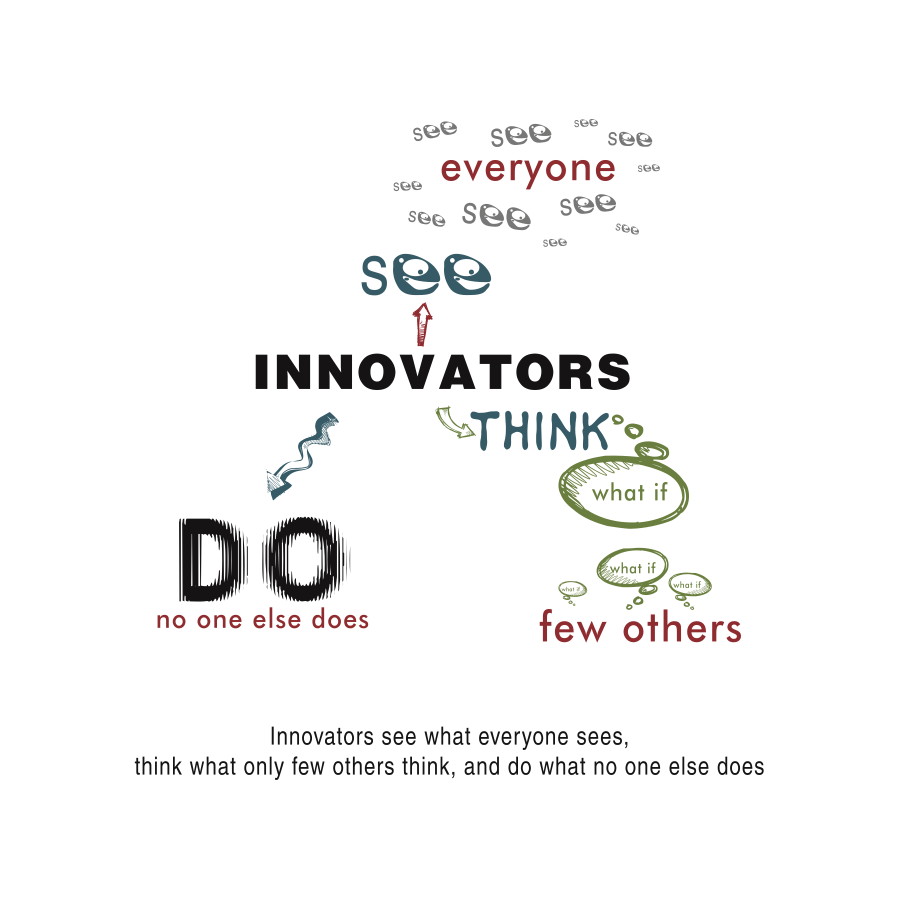 How come innovators do what no one else does? The oversimplified answer is that they take risks that others wouldn’t take. Does that mean we need to take more risks? Unfortunately, it’s not that simple. . . .
How come innovators do what no one else does? The oversimplified answer is that they take risks that others wouldn’t take. Does that mean we need to take more risks? Unfortunately, it’s not that simple. . . .
Welcome to part three of our three-part mini-series “Innovators see what everyone sees – think what only few others think – and do what no one else does” (Here’s part 1 and here’s part 2)
Let’s take a look at neuroscience and what happens in our brains when we’re confronted with a risk (disclosure: we’re simplifying here to keep this brief).
When we’re confronted with a risk, our brain goes into an automatic reaction. We can’t control it. But when we understand it, we can manipulate our own processing so that it gets us to a better automatic response.
There are several distinct parts of our brain involved in processing a risk. More importantly, there are two different ways in which they interact as they process the risk. One process is the “low road” and the other is the” high road.” Both processes take place at the same time. The low road is the faster of the two because it involves fewer steps. One important distinction between the two is that the low road does not involve accessing our memory to retrieve similar situations to check the risk against past experiences. Instead, the high road retrieves memories to provide context to the risk.
Here’s how the two processes work in parallel: both roads get triggered by a situation. As an example, we wake up in the middle of the night because we hear a sound coming from the kitchen. Immediately, there is a low-road reaction to this just based on sensory input. At the same time, the high road checks if we have heard the sound before; it recalls that we have a cat that could be roaming the house, that we left too many dishes stacked on the counter and maybe something fell over, and so one. If we’re able to find memories that provide a context to the current situation, showing the fear is unwarranted, then the hormone reaction is put to a stop again, and we’re able to make a rational decision. Depending on how the high-road process goes, it may or may not calm the low-road reaction.
In a professional context, even though the shock moment may not be there and the hormone release not as strong, the same trigger still kicks in, and the two processes start running. Maybe we have to make a decision in an area we’re not experienced in, launch something that’s new for us, or deal with a conflict unfamiliar to us. Again, the low road causes a fast reaction with a hormone release that gives us the experience of fear.
The slower process, the high road, checks the situation against past experiences. If there is a memory that gives us better context, the high-road process can calm down the low-road process. This gives us access to a more rational decision.
Therefore, the solution to responding better in unfamiliar situations is having enough similar memories and experiences available. This gives our brain the chance to put the current situation in context. The more similar experiences we have, the better our chance to react past the primal freeze, fight-or-flight reaction and make a rational decision.
It’s not that innovators haven taken more risk in general. It’s that they can recall more experiences with similar situations. That’s why they are better at taking action – and everyone can practice this.
Make it real
When you feel the instinctive freeze, fight-or-flight reaction kick in, take note that is has happened. When your brain has calmed down again (takes about thirty minutes for the hormones to ebb out of the system), ask yourself what similar situations you can put yourself into. Immerse yourself in those situations, practice them, and give your brain something to recall when it gets real the next time.



